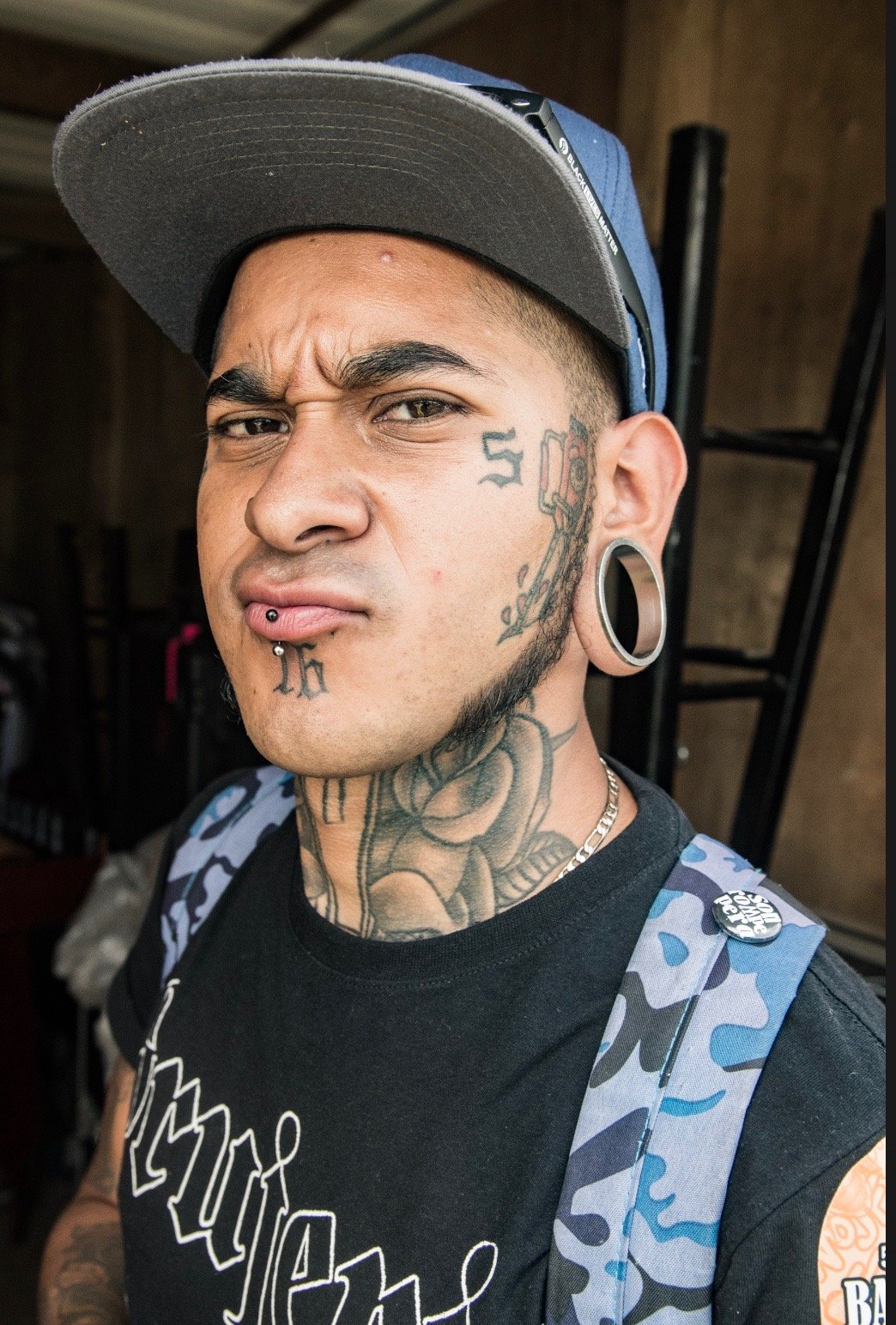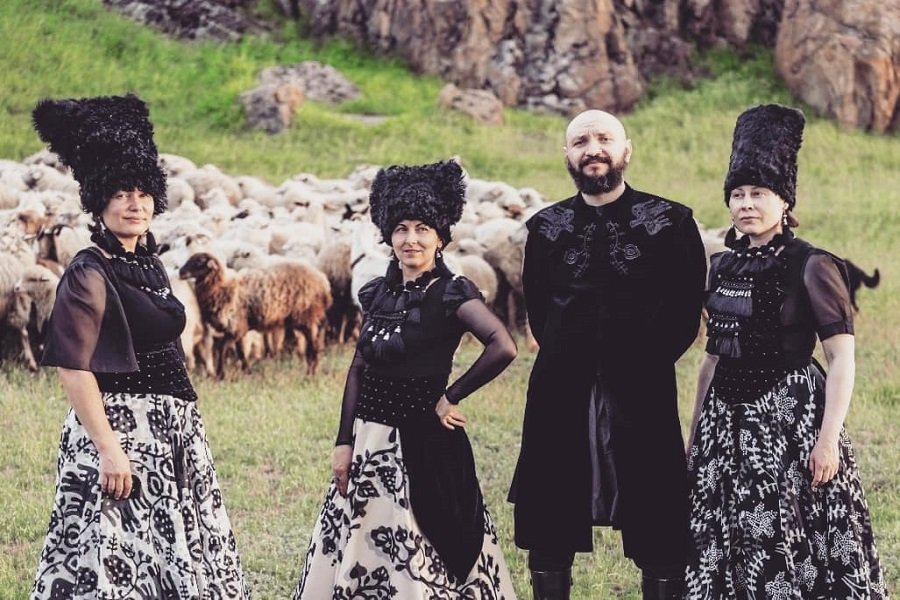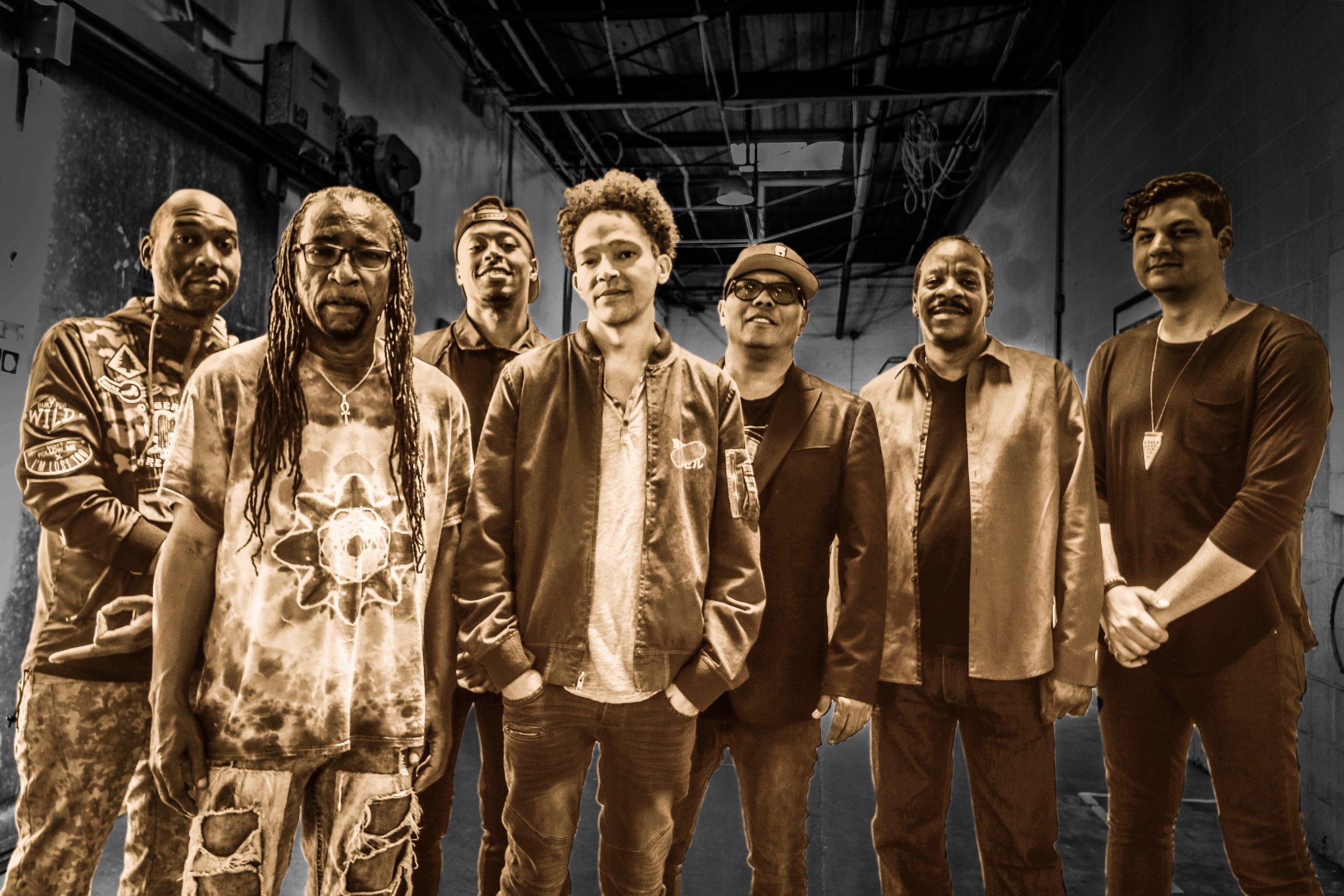Son Rompe Pera, Las Cafeteras, Avetts, Neslorchestra among Sunday's Best at Jazz Fest

Son Rompe Pera, by Pableaux Johnson
Highlights from Sunday include a cumbia battle and the Avett Brothers being themselves.
Sunday looked like Sunday at Jazz Fest. During the final sets, Red Hot Chili Peppers and Charlie Wilson played to packed audiences that stretched on to the track, and the Avett Brothers delivered a full house as well, one Seth Avett temporarily joined when he walked out to the soundboard while taking a guitar solo during “Kick Drum Heart.” A moment that won’t likely be part of most people’s assessment of the day was the brief cumbia battle took place at Jazz Fest in the middle of the afternoon. While Las Cafeteras played a cumbia in the Cultural Exchange Tent, the Mexican band Son Rompe Pera played a whole set of a few hundred feet away on the Jazz & Heritage Stage.
Son Rompe Pera was one of the discoveries of this year’s Jazz Fest, and a few hours later the band from the outskirts of Mexico City brought its cumbia punk into the Cultural Exchange Pavilion, and it’s hard to imagine a more punk show at Jazz Fest. In many ways, it wasn’t punk at all. Alfredo de Jesus Gama and Allan Gama played traditional cumbias on an old wooden marimba big enough to pass out on that looked like a piece of furniture down to its carved legs. The slight sway in the center reinforced by a big screw suggests that it hasn’t always been treated with the needed care, and for much of the set that and the band members’ T-shirts were the only traces of any punk roots. When they performed “Tequila,” they did so with enough integrity and commitment to make me see if the song started life as a cumbia. (It didn’t, though it has origins in Cuban music and it was written by Danny Flores, whose parents emigrated to California from Mexico shortly before he was born in 1929.)
As Son Rompe Pera settled into the set—settled not really being the right word—their full personality became clearer, as did their punk selves. Periodically Alfredo de Jesus Gama and Allen Gama would headbang while playing the marimba, malletting with measured ferocity. At one point percussionist José Angel Gama stepped up for a vocal interlude delivered at hardcore speed and intensity, but even as their rowdier side became clearer, they never sold out the cumbia.
Son Rompe Pera, by Pableaux Johnson
For me, the set and song of the day came from Las Cafeteras, who remade Woody Guthrie’s “This Land is Your Land” en Español. Racial and border politics were hardly the sole focus of the band from East Los Angeles, but they are an inescapable part of the fabric of the lives that they and those around them lead. Singer Hector Flores said with a wink that when his father crossed the border from Mexico, he “forgot” his papers, and the band had a T-shirt that read, “Yo No Creo En Fronteras”—“I don’t believe in borders.”
None of that felt weighty or agenda-driven because the set in the Cultural Exchange Pavilion was a party first. They folded together old school hip-hop, classic R&B, Mexican rock ’n’ roll and the son jarocho style that inspired the band’s sound, and they delivered it with enough showmanship to make the social issues that rippled through their music feel like a feature, not a purpose. Flores dedicated “La Sireña’ to the LGBTQ+ community, and he reminded people that New Orleans has a statue (at 1200 Conti St.) of Benito Juárez, the progressive governor of Oaxaca and President of Mexico who spent time in exile in New Orleans before performing “Oaxaca Love Song #2.”
The set started with “Long Time Coming,” a roller-skating jam that I had to double-check online later because once the show was over, I couldn’t believe that that’s where it began. In retrospect, it set the tone for the show by being simultaneously pointed and fun with the band so committed to the funk and the call for change that it was hard not to sign on immediately. The song, like the set, was also ultimately optimistic, which sounded great at a time when it’s easy to feel pessimistic.
It was great to see The Avett Brothers close the Shell Gentilly Stage on Saturday. Their lyrical and musical rawness made them one of my favorite bands for a while, but 2009’s I and Love and You recorded with Rick Rubin seemed to signal the coming of a more professional Avett Brothers that I wasn’t sure I wanted, even though I liked a lot of the album. On Sunday, I missed the feeling that moments of genius could tip into catastrophe in the blink of an eye, but I liked getting a clearer fix on where their punk selves truly lived. It wasn’t in their amateurism that I probably overvalued at the time but their willingness to fly without protection, getting musically and emotionally naked deliberately, not accidentally. Their bluegrass roots clearly fuel their desire and ability to sing from their hearts, and years in the business have helped them find ways to closer to the hearts of their songs.
One great example was “Kick Drum Heart,” which has always been a clear winner of a song that got a fussy, piano-driven arrangement on I and Love and You. Since the release of the album, it seems like they realized the recorded version lost something as you can go to YouTube and see a number of arrangements that they’ve created for it. On Sunday, Seth Avett played the insistent piano part on a Gibson Les Paul, and while none of the song’s spirit or idiosyncrasy was lost, it became even more immediate and satisfying.
They’re no longer positioned to be the potential faces of Americana—a role I can’t imagined they wanted or enjoyed—and it doesn’t matter since that ship has sailed. But they seemed to have comfortably grown into their lives and gig, and the show felt centered for it.
The booking of the Jazz Tent remains brutally conservative, and one bizarre blind spot is local artists whose music varies from the canonical blues-inspired jazz orthodoxy. Those who work from alternative modes of composition including spontaneous composition are often left out, or the players appear as sidemen on someone else’s gig. With that in mind, it’s a cause for celebration when anything uncommon gets to the Jazz Tent stage the way Rick Trolsen’s Neslorchestra did on Sunday afternoon.
The Neslorchestra is an outgrowth of Neslort, Trolsen’s new wave/prog/alternative jazz band, blown up to 17 pieces to add a big band dimension. They played pieces from The Primordial Epiphany Suite and as so often happens when any of these groups play Jazz Fest, it’s not clear why there’s such an allergy to them. Trolsen broadens his musical palate by putting the sound of a rock guitar, bass and drums in his lineup, but it’s not a rock show. The players know the gig and add textures and energy that make sense in Trolsen’s compositions.
I hear a Zappa influence in Trolsen’s Neslort music, and sometimes that translates to a fussiness I can take or leave. With the Neslorchestra and these compositions, that manifested as music that didn’t show any signs of strain melding genres. “The Tyrant’s Invitation,” for example, sounded like a soundtrack in search of a movie.
Trolsen pulled together players from across the musical spectrum to bring their distinctive sounds and approaches to his music. On Sunday, the result was a rich, ambitious set that sounded like something you’d expect to hear at a Jazz Fest in New Orleans.
Daniel Lanois’ set could only have taken place in the Lagniappe Stage. Any place else at the Fair Grounds and his ambient hum would have been lost in the larger ambient hum. My favorite Lanois tracks sounds like someone left a guitar leaning against the amp, where a tremolo pedal slowly pulsed the music to life. I want songs that are excuses for exquisite tones lovingly floated into existence.
I’m sure that those dissatisfied with Lanois’ set found it too pokey and noodly; I went the other way. Lanois treats his songs as slow, airy, vibrating prayers, but if I’m going to invest in someone else prayers, I need them to be more passionate. My favorite moments came when he engaged with the sound as sound.
José Angel Gama of Son Rompe Pera, by Pableaux Johnson
Creator of My Spilt Milk and its spin-off Christmas music website and podcast, TwelveSongsOfChristmas.com.








